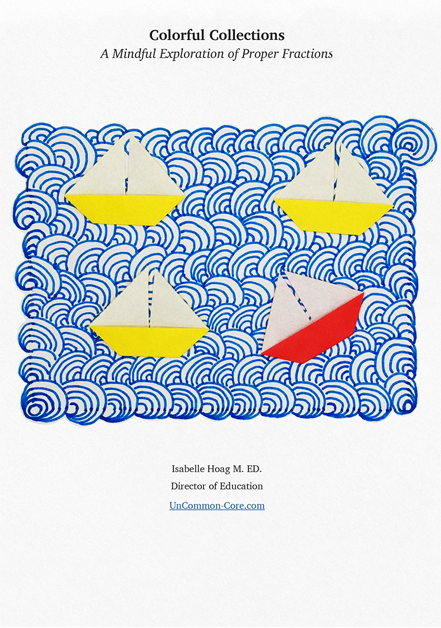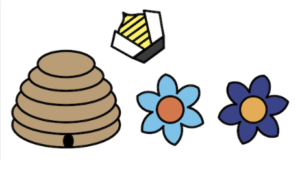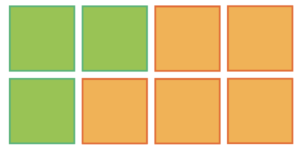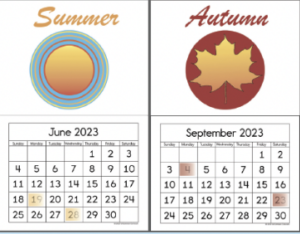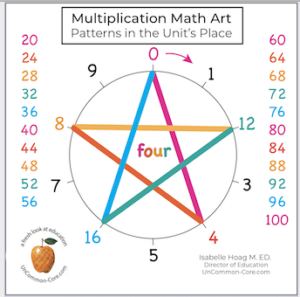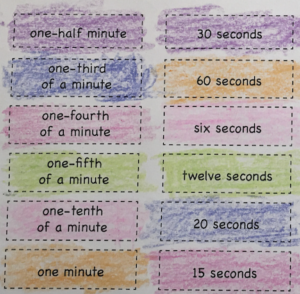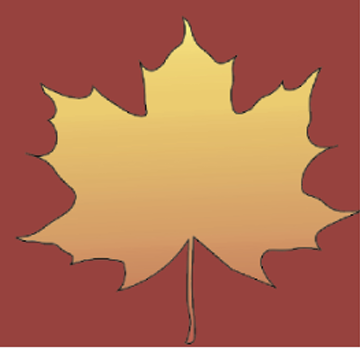
Whenever you have a new class, new students, or new circumstances of any kind, teachers might decide to use a gentle Get-to-Know-You type of math activity. The list of math-art activities below starts with ideas for very young learners and marches up to middle school aged students.
Kindergarten – Second Grade
Number Line Activities
Bee Number Line Activities give little students plenty of time to count and color their own number line. Number lines can be any size teachers decide. Using a hive as home base, helps students get in the habit of starting on zero when using a number line. Bee pointers can be cut out, stuck to pencil tops, or you could splurge on these cute little bee erasers ( $7.99 for 30 on Amazon as of today) or if you need more bees, you might get these ($7.69 for 100 on Amazon as of today). What child would bite a bee? If you have very young students these are not a safe size for independent work.
Discover Even Odd Math Rules
Adding and Subtracting activities like this one serve several purposes; they let students show what they know, give students an activity that is familiar, and allows teachers to quietly assess your students’ ability levels at the same time. Invite your class to add and subtract odd numbers, even numbers, or odd and even numbers. This is actually an entire week of math activities:
- Monday: add pairs of odd numbers. Help students write a rule about adding odd numbers together. You could even offer a prize (all the cheese in Wisconsin) for anyone who can find two odd numbers that add to an odd sum!
- Tuesday: Subtract an odd number from an odd number. Write another math rule about subtracting odd numbers from odd numbers. Help students understand why by using manipulatives to subtract.
- Wednesday: Add even numbers while searching for a rule about adding even numbers. Challenge students to find the largest even numbers they can add to see if using large numbers changes anything.
- Thursday: Subtract even numbers from other even numbers and create another math rule from the evidence students collect.
- Friday: Challenge students to predict what will happen when odd and even numbers are added together or subtracted from one another. Let them collect all the evidence they need to write another math rule.
You could give students dice, or 100s charts, to help them find numbers to work with. Activities like these encourage students to use academic vocabulary while working and give students a sense of excitement as they discover math rules for themselves.
Create Calendar Art
Creating Calendar Art for the top of a calendar, is another fun activity that helps students collect their thoughts about the changing seasons and the progress of time. Print any of the months on the bottom half of a portrait oriented page. Then have students create the decorations. Older students could also number the days of a blank calendar page, or paste preprinted numbers in place. Be on the look out for the 2024 calendar project coming soon. Sign up for my weekly email where I offer most of my new products for free before moving them to my TPT store.
Older students may also benefit from creating some calendar art.
Third Grade and Beyond
Multiplication Math Art
Multiplication Math Art offers an exciting and creative way to review multiplication facts and explore patterns at the same time. Geometric designs are created based on the digit in the unit’s place of multiples of each number. As ten is the number our positional number system is based on, pairs that add to 10 make similar patterns! These colorful patterns have been made into silent slideshows which you could share while students are working, or use as a choral skip counting activity for the entire class.
Fractions of Time
Fractions of Time activities offer students a basic review of both topics. There are many options to chose from so that your students’ work will all look different. This is a light-hearted yet important set of activities that will give you insight into each student’s work habits, understanding of the topics, and ability to follow directions. Depending on how you decide to present it, the activity could include coloring, cutting, pasting, and layout/design elements.
Student Reflection 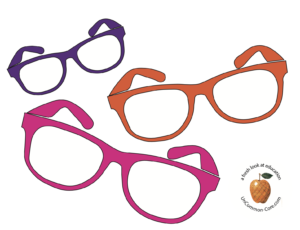
Student Reflection activities are normally used at the end of a topic or unit. However, why not start the year by having your students share how they feel about the math they have learned so far? Giving students a chance to explain their views, what challenges they face in math class, what they value most about math, or where they would like to get better in math will give you valuable insights into how your students think about what they have learned so far and help you plan your next steps. Since many students may not have experience writing about math, this is also a fantastic way to check on their academic vocabularies and writing skills. Finally, using this student reflection activity now helps familiarize your students with the form so they will feel more comfortable when you use this or other writing reflection tools throughout the year.
I’m currently not an Amazon affiliate, however it wouldn’t change the price you pay if I join up later.
Share This Story, Choose Your Platform!
Download Colorful Collections:
A Mindful Exploration of Proper Fractions
Help your students make sense of fractions.
I started teaching in 1987, which means I’ve collected many tips and tricks along the way. In this ebook, I share concepts, strategies, and classroom materials to help you make math sticky.
Along with this useful ebook, you will receive weekly emails from StickyMath@UnCommon-Core.com. I send information like: teacher tips, educational ideas, book reviews, curated lists, reviews of educational sites, and free first drafts of products that I’m creating for my TPT store. That way, you get helpful ideas and free stuff, while I get some feedback before I finalize products and put them up for sale.
I value your privacy. I will never sell your information. You may unsubscribe at any time.
All the best!
Isabelle
Isabelle Hoag M. Ed.
